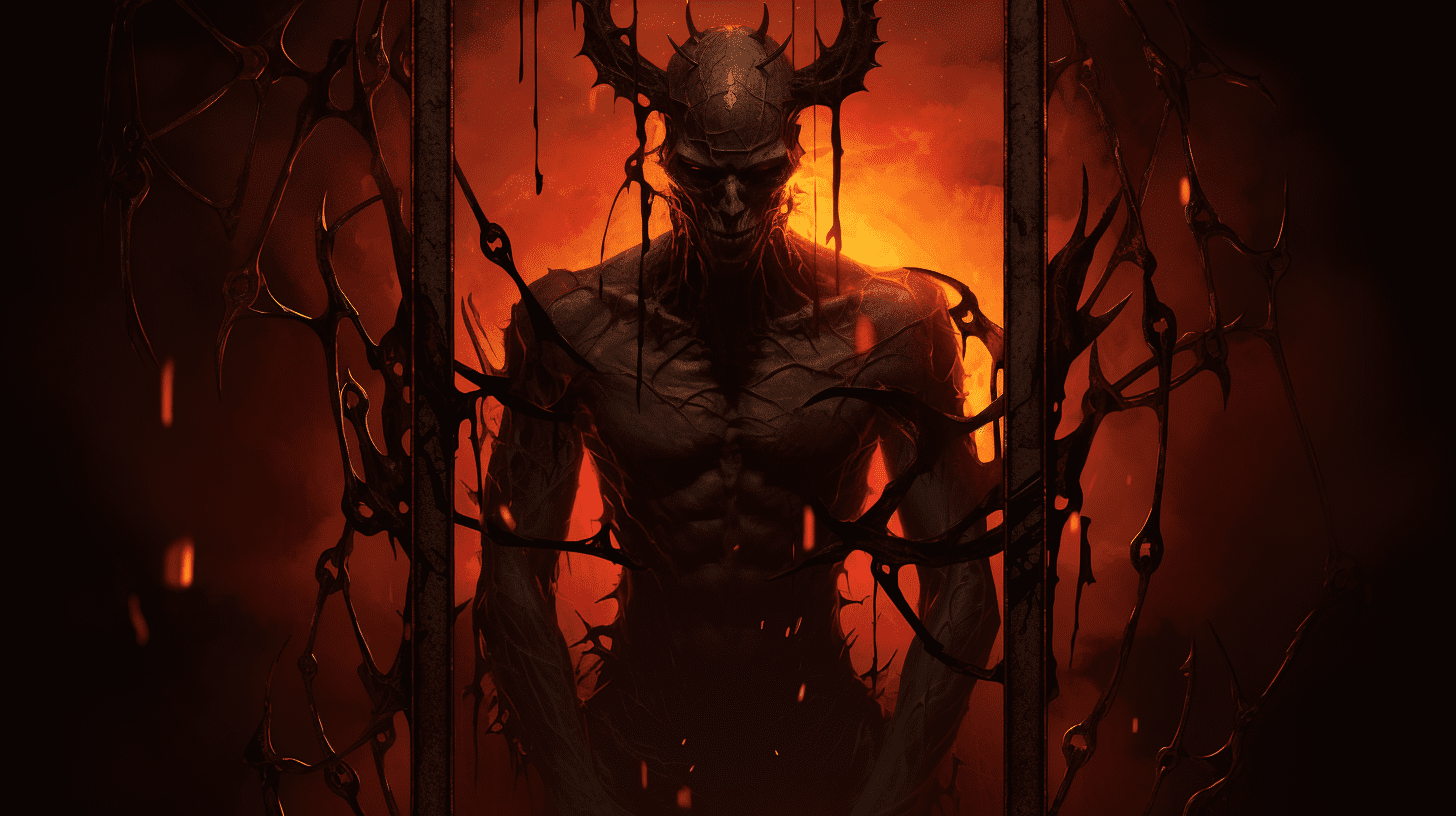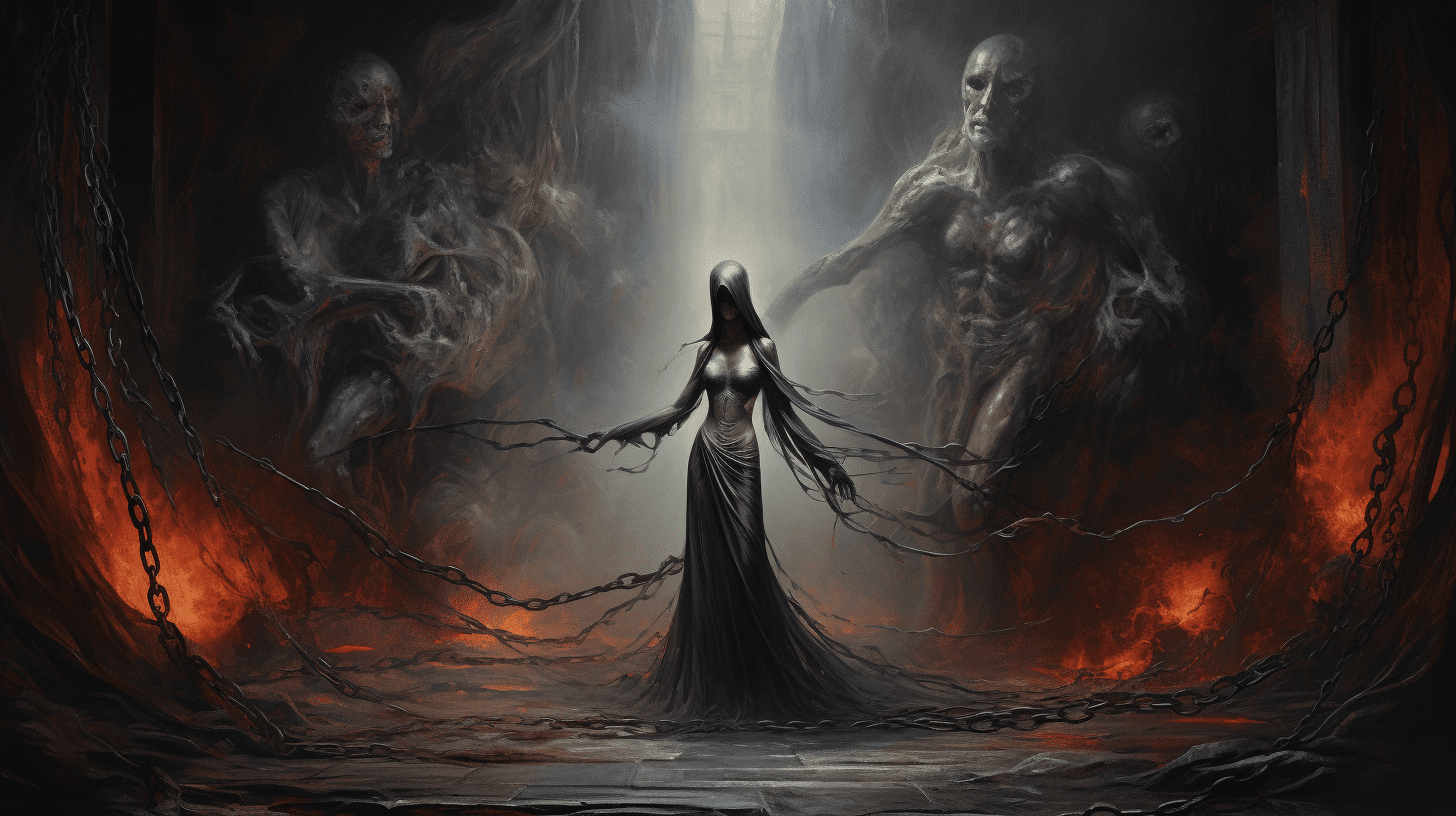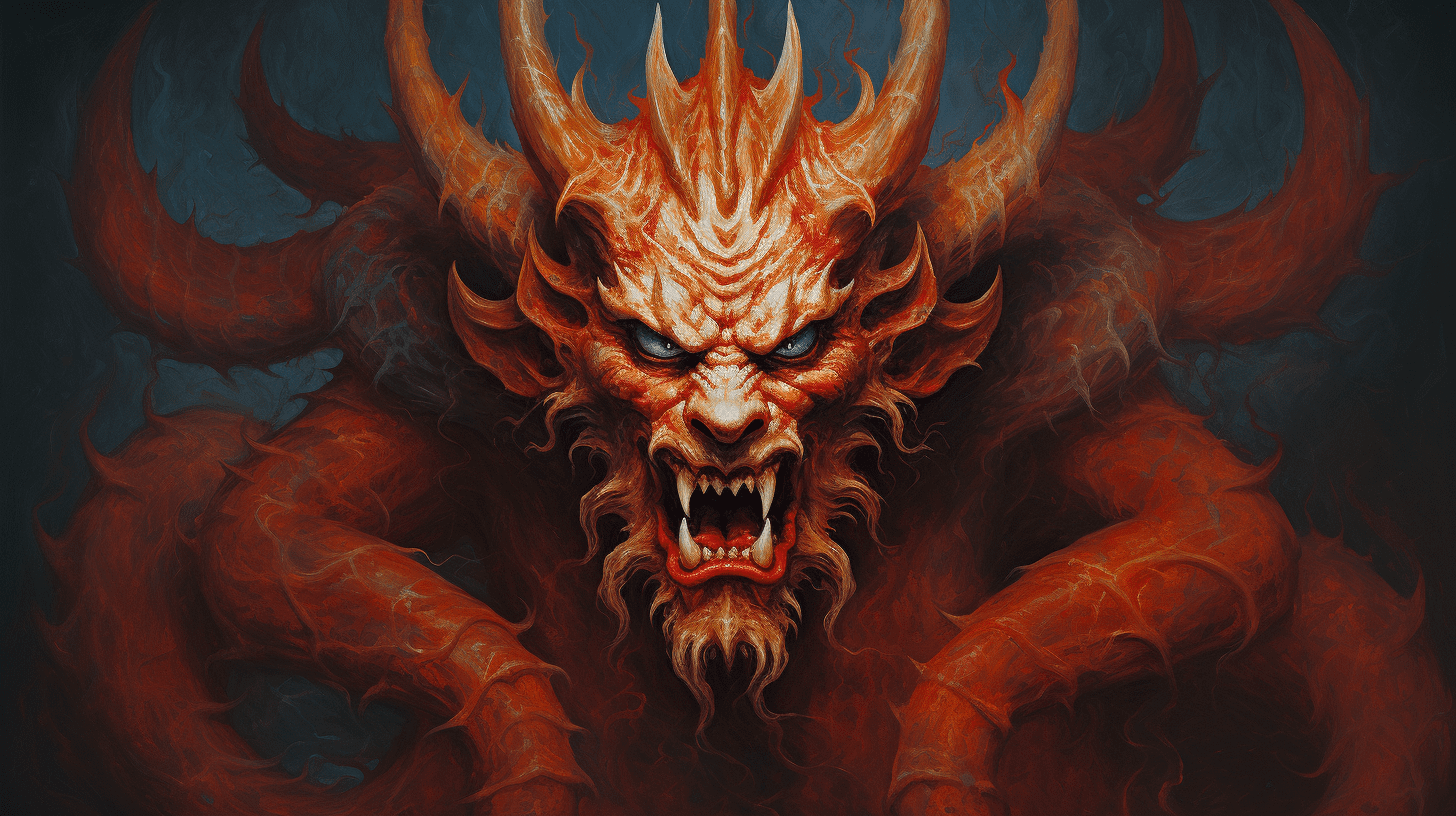
Last Update:
The Devil
Published on

Last Update:
Published on
So you think you’re ready to confront your inner demons? Well, get ready to dive deep into the dark and mysterious world of Card 15: The Devil.
In this article, we’ll explore the symbolism, interpretation, and art details of this intriguing tarot card.
But that’s not all – we’ll also provide you with memory improvement techniques to help you remember the intricate details of each card.
So buckle up, because things are about to get devilishly interesting.
The Devil card, numbered as 15 in the tarot deck, is associated with the zodiac sign Capricorn.
This card represents themes of temptation, bondage, and materialism. Its imagery often depicts a devil figure with chains, symbolizing the ways in which we may become trapped by our own desires and attachments.
Explore the significance of Card Number 15, also known as the Devil Card, in your tarot readings.
The Devil Card is one of the most intriguing and complex cards in the tarot deck. Its symbolism is deep-rooted and carries multiple interpretations.
In tarot readings, the Devil Card often represents temptation, bondage, and the influence of negative forces. It serves as a reminder to be cautious and aware of the temptations that may lead to undesirable consequences.
The card signifies the need to confront our own inner demons and break free from self-imposed limitations. It warns against becoming too attached to material possessions or destructive habits.
When the Devil Card appears, it’s an invitation to examine our own shadows, acknowledge our fears, and take responsibility for our actions.
When discussing the astrological association of the Devil Card in tarot readings, it’s important to consider the influence of planetary energies.
The Devil card is associated with the zodiac signs of Capricorn and Scorpio. Capricorn represents ambition, discipline, and the pursuit of success, while Scorpio embodies intensity, transformation, and the depths of the subconscious.
The Devil card’s symbolism in astrology reflects the darker aspects of these signs. It represents bondage, addiction, and the temptation to indulge in material desires.
The card serves as a reminder to be wary of the negative influences that can hold us back and prevent personal growth. It urges us to confront our own inner demons and break free from the chains that bind us.
The Devil card in astrology acts as a warning and a call to self-awareness and liberation.

Discovering the Devil card can provide valuable insights into your own personal journey and the challenges you may face along the way. Symbolized by a figure with horns, wings, and a tail, the Devil card represents themes of temptation, bondage, and the shadow aspects of our psyche.
When interpreting this card, it’s important to consider its symbolism and the techniques used to understand its meaning. The Devil card often signifies the influence of negative patterns, addictions, or unhealthy relationships in our lives. It serves as a reminder to examine our attachments and question whether they’re truly serving our highest good.
When it comes to interpreting Card 15: The Devil, there are two main points to consider.
Firstly, there’s the positive interpretation, which suggests that this card represents a necessary confrontation with one’s own shadow side in order to achieve personal growth and transformation.
On the other hand, the reverse interpretation suggests that The Devil may indicate a state of being trapped or controlled by negative patterns or addictions, urging you to break free and reclaim your personal power.
Understanding these two contrasting perspectives can help provide a more nuanced understanding of the meaning behind this card.
The positive interpretation of Card 15, The Devil, allows you to see the potential for personal growth and transformation. By exploring symbolism and adopting an empowering perspective, you can gain valuable insights from this card.
Here are two key aspects to consider:
Breaking free from bondage:
Embracing your shadow self:
As you delve into the reverse interpretation of Card 15, The Devil, a new perspective emerges, shedding light on the potential challenges and pitfalls that may arise when the card appears in this position.
Exploring symbolism becomes crucial in understanding the reversed Devil card. In this context, the card can symbolize a release from the negative influences and addictions that have been holding you back. It may signify a breakthrough in overcoming your fears and embracing freedom.
Psychological interpretation also plays a significant role in deciphering the reversed Devil card. It suggests that you’re beginning to recognize the destructive patterns and behaviors that have been keeping you trapped. It encourages you to confront your inner demons and take steps towards personal growth and transformation.
The reversed Devil card serves as a reminder that you have the power to break free from self-imposed limitations and embrace a healthier, more fulfilling path.

Now let’s turn our attention to the art details of Card 15: The Devil.
In the Rider-Waite Edition, the artwork depicts a demonic figure with horns, wings, and a third eye, standing on a pedestal while two naked figures, a man and a woman, are chained to it.
The Gilded Tarot Edition offers a different interpretation, showcasing a devil-like creature surrounded by flames.
These art details are essential in understanding the symbolism and meaning behind the card, providing visual cues for deeper analysis and interpretation.
Explore the artwork details of the Rider-Waite Edition of Card 15: The Devil.
This particular version of the card, designed by Pamela Colman Smith and published by Arthur Edward Waite in 1910, is known for its iconic symbolism and distinctive artistic style.
The image depicts a horned figure sitting on a throne, with two naked human figures chained to it.
The Devil holds a torch in one hand and a trident in the other, representing power and control.
The chains around the figures’ necks symbolize bondage and captivity.
The overall artistic style of the card is characterized by bold lines, vibrant colors, and a sense of dramatic intensity.
The use of symbolism and the unique artistic style make the Rider-Waite Edition of Card 15: The Devil a visually striking and thought-provoking representation of the theme.
Let’s dive into the art details of the Gilded Tarot for Card 15: The Devil.
The symbolism used in this card is significant and adds depth to its meanings. In the Gilded Tarot, The Devil is depicted as a horned, winged creature with a human-like body. The figure is seated on a throne, holding a torch in one hand and a scepter in the other.
The chains around the figures’ necks and wrists represent bondage and captivity, symbolizing our own self-imposed limitations and addictions. The card’s dark color scheme and eerie atmosphere convey a sense of temptation and entrapment.
The Devil card reminds us to be aware of our desires and attachments, as they can hold us captive and prevent us from living a fulfilling life.
To understand the artwork specifics of Card 15: The Devil, examine the intricate details and symbolism portrayed in the Gilded Tarot. The symbolism in this card is rich and thought-provoking, inviting deeper exploration.
The Devil is depicted as a horned figure, representing temptation and bondage. The chains on the figures’ necks and the devilish expression on their faces symbolize the entrapment of one’s desires and addictions.
Additionally, the card’s color choices contribute to its symbolism. The dominant colors are red and black, which evoke feelings of passion, power, and darkness. Red symbolizes desire and temptation, while black represents the unknown and the shadow side of human nature. These color choices further emphasize the card’s theme of bondage and the struggle to break free from negative influences.

How can you apply these memory improvement techniques to enhance your overall learning experience?
Reflecting on personal growth is an essential aspect of utilizing memory improvement techniques effectively. By taking the time to reflect on your progress, you can identify areas where you have improved and areas that still need work. This self-reflection allows you to adjust your learning strategies accordingly and make necessary changes.
Additionally, reflecting on personal growth helps you gain a deeper understanding of your learning style and preferences. This knowledge can then be used to tailor your study methods and optimize your learning experience. Memory improvement techniques aren’t a one-size-fits-all approach, and by understanding yourself better, you can refine your approach and achieve better results.
The Devil card in tarot readings holds significant meaning. It symbolizes the role of personal responsibility and the need to face your inner demons. This card serves as a reminder that we’ve the power to overcome our own limitations and make choices that align with our highest good.
It urges you to confront your fears and negative patterns, allowing for personal growth and transformation. Embracing the lessons of the Devil card can lead to liberation and a deeper understanding of oneself.
When it comes to the devil card, it’s important to understand how it relates to issues of temptation and addiction.
This card symbolizes the struggle between temptation and self-control. It serves as a reminder that we all face choices that can lead us down a destructive path.
However, it also offers hope, as it represents the opportunity to overcome addiction and regain control. By recognizing the power of temptation, you can take the necessary steps to break free from its grip and find liberation.
Symbols and imagery play a significant role in understanding the Devil card.
When examining the Devil card, various symbols can be observed, such as the inverted pentagram, representing the distortion of spiritual energy.
Additionally, the chains that bind the figures in the card symbolize the grip of addiction and temptation.
The imagery of the Devil card often portrays a creature with horns and wings, representing the primal and destructive aspects of human nature.
These symbols and imagery provide insight into the complex themes of the card.
In tarot readings, the Devil card may surprise you with its potential for positive aspects and messages. While commonly associated with temptation and indulgence, this card also symbolizes the power to break free from unhealthy patterns and reclaim control over your life.
It serves as a reminder to examine your desires and confront any self-imposed limitations. Embracing the shadow self can lead to personal growth and transformation. The Devil card offers a unique opportunity for self-reflection and empowerment.
To effectively interpret and analyze the devil card in various tarot spreads, you need to focus on the symbolism and the influence it represents. Look for themes of temptation, bondage, and materialism.
Consider the position of the card in the spread and its surrounding cards to gain deeper insight. Analyze the imagery and colors to understand the emotional and psychological aspects at play.